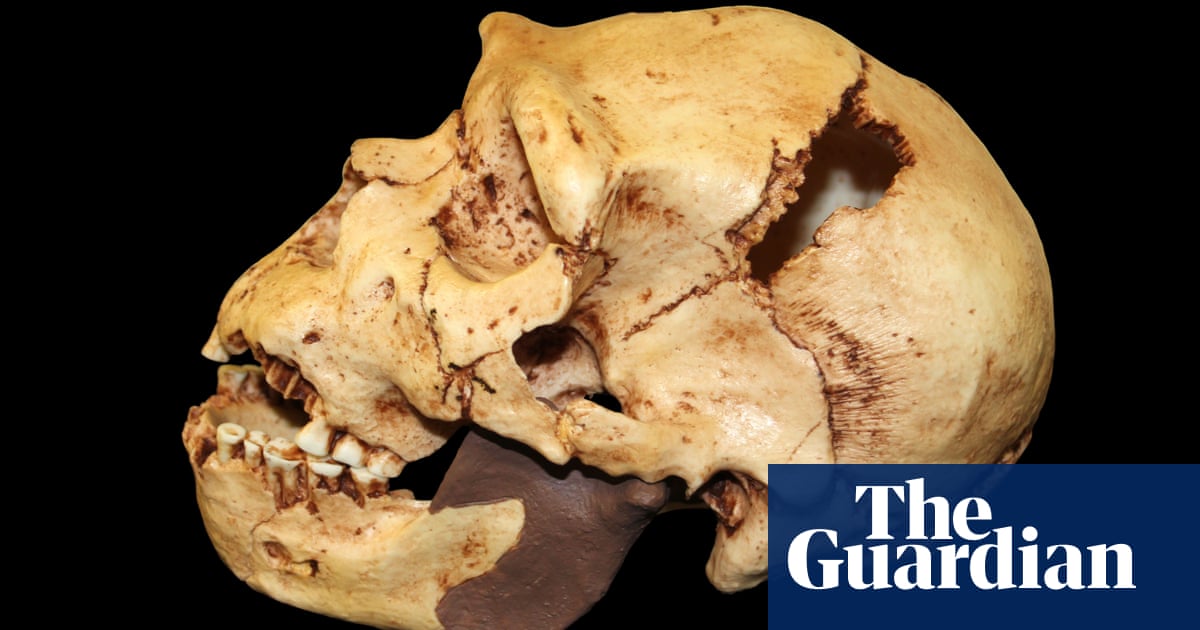
A 66m-year-old murder mystery has finally been solved, researchers say, revealing an enormous asteroid struck the killer blow for the dinosaurs.
The Cretaceous/Paleogene extinction event resulted in about 75% of plants and animals – including non-avian dinosaurs – being wiped out. But the driving cause of the catastrophe has been a topic of hot debate.
Some scientists say the 10km-wide asteroid that smashed into Earth and created the Chicxulub crater was the chief cause, with the strike sending up vast quantities of material that blocked the sun, triggering a prolonged, cold period that caused devastation.
However, others say volcanic activity in India’s Deccan region was the main driver, causing large-scale climate change. Volcanic eruptions have previously been found to have driven other mass extinctions, including the end-Permian mass extinction.
Still others have suggested the two acted together, possibly with the asteroid the last straw after a long period of instability caused by volcanic activity.
Now researchers say they have unpicked the mystery by modelling the ecological effects of the different possibilities.
“When we produced the different scenarios both for either the two things happening together, or completely separated, we see the asteroid is [the] only [event] that can completely eradicate the habitats that can be suitable for dinosaurs,” said Dr Alfio Alessandro Chiarenza, first author of the research at University College London.
Writing in the Proceedings of the National Academy of Sciences, Chiarenza and colleagues report how they built models to explore how the different disasters would have affected the planet’s climate and, crucially, the habitats in which dinosaurs lived, from tyrannosaurs to the armoured ankylosaurs.
The team first looked at a 5% reduction in sunlight – the top end of what would be expected from the sulphur dioxide and debris from the volcanic eruptions blocking out light, but a very mild scenario for the asteroid impact. The model suggested this would not have led to extinction of the dinosaurs, although their habitat would have been reduced because of the long-term impact on factors such as temperature and rainfall.
However a 10%-20% reduction in sunlight, the lower to extreme range expected from the asteroid strike, would have devastated dinosaur habitats, with a dimming of 15% or more destroying them completely.
“Even if the volcanic eruptions had not happened, the extinction would have occurred in any case as the [impact] event was severe enough to eradicate dinosaurs’ habitats worldwide,” Chiarenza told the Guardian.
In fact the team suggest that rather than wiping out life, the pulses of global warming resulting from carbon dioxide released from the volcanoes could have buffered the cooling from the asteroid strike and helped life recover – although the fate of the non-avian dinosaurs would have remained the same.
We [thought]: ok… is that something completely outrageous to suggest?” said Chiarenza. “But actually is seems that recently there have been studies that have been looking at this very thing in the geologic record, showing that some pulses of warming, particularly after the impact event, seem to have boosted somehow the recovery of life, particularly plant life, but also [led to] the increase of body size in mammals and in diversity.”
The team say the findings tie in with other research, including fossil evidence from the Deccan that animals including dinosaurs survived previous high-intensity eruptions, and findings suggesting the mass extinction was a sudden event.
But Chiarenza said he expected debate to continue, adding proponents of the volcanism theory were likely to push back. “I am pretty sure these guys will not take it easily,” he said.
Gerta Keller, professor of palaeontology and geology at Princeton University, who was not involved in the work, criticised the research saying it ignored evidence from recent Deccan volcanism studies, including findings showing the largest volcanic eruption pulse coincided with the mass extinction.
“When the basic assumptions of a study are based on cherry-picked data, the results are predictable and wrong,” she said.
However, Steve Brusatte, professor of palaeontology and evolution at the University of Edinburgh, said the study was elegant and convincing.
“It adds overwhelming evidence that the asteroid was the culprit, full stop,” he said. “Not only that, but it specifically targets one aspect of the asteroid’s arsenal of weapons as the one that felled the dinosaurs: it was the nuclear winter that fell after the dust and grime from the asteroid blocked out the sun for several years.”
“It does, though, seem that volcanoes played a role, just not the one many of us suspected: they played a mitigating role,” he added.
Brusatte said, he too, expected debate to continue. “But with each new study, and now especially with this outstanding piece of work, it becomes harder and harder to entertain anything other than the asteroid,” he said.












